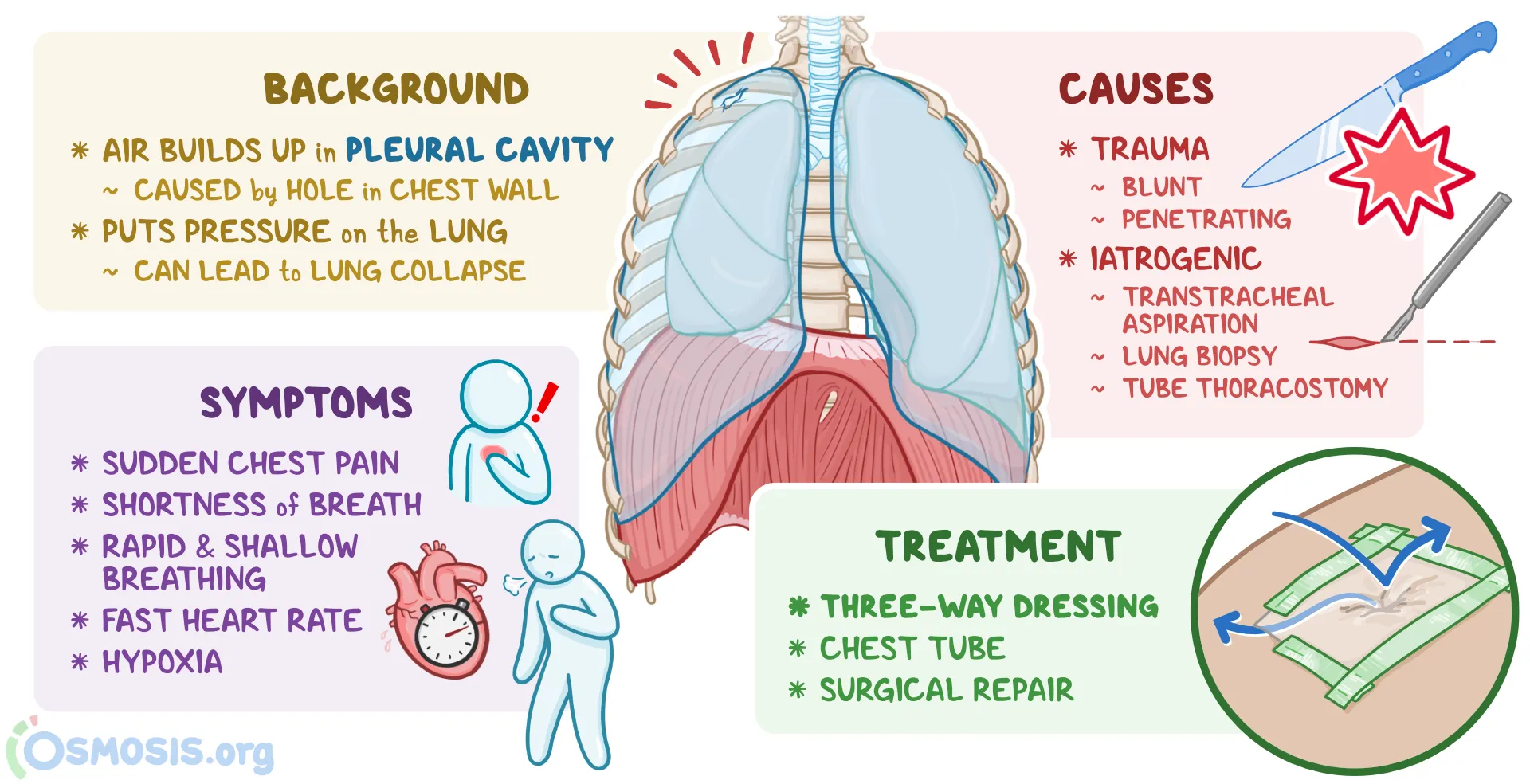Pneumothorax is a medical condition in which air or gas is trapped in the lungs' pleural cavity.
This buildup of air or gas causes the lung to collapse, resulting in decreased lung function and severe health conditions.
And it can be caused by several distinct factors, including trauma, medical procedures, infections, and even smoking.
The effects of this condition can be pretty severe and even life-threatening. Generally, immediate medical attention is needed to restore the lung to its normal function.
And its Treatment involves inserting a needle in the chest tube or catheter to remove excess air or gas from the pleural cavity.
Surgery may sometimes be crucial to repair a tear or hole in the chest wall.

While pneumothorax can be severe and sometimes even fatal, most cases can be easily treated and cured with the right medical attention.
In India alone, this is the reason for one million+ doctor and hospital visits per year, while the number in the USA and other countries is negligible compared to India.
What are the Causes of Pneumothorax?
This condition occurs when air or gas is trapped in the pleural space between the lungs and the chest wall.
As the trapped air builds up, it can cause increased pressure in the chest, making breathing difficult.
For this reason, relief from pneumothorax often requires the implementation of breathing exercises.
What are the Symptoms of Pneumothorax?
Symptoms of pneumothorax can range from mild to severe, depending on the severity of the condition.
Ordinary symptoms include
Chest pain
Shortness of breath
Rapid breathing
Rapid heartbeat.
Other symptoms may include
s=Sharp chest pain when taking a breath or coughing
Difficulty breathing
Bluish discoloration on the affected side of the chest
Sweating
Fatigue.
In severe cases, a person may become lightheaded or lose consciousness.
What are the Risk Factors for Pneumothorax?
There are various Risk factors for developing pneumothorax, and these include:
Smoking.
Chronic obstructive pulmonary disease (COPD).
Cystic fibrosis.
Asthma.
Respiratory illness.
Trauma or chest injury from a car accident or physical confrontation.
History of pneumothorax in the family.
Lung diseases such as emphysema or chronic bronchitis.
Lung surgery.
Mechanical ventilation.
Introduction of foreign objects into the lungs.
High altitude and flying (especially in unpressurized aircraft).
Why Are Exercises in Pneumothorax Necessary?
The primary goal of a breathing exercise for pneumothorax is to promote better use of the lungs and reduce the pressure the trapped air exerts on the chest.
By doing exercises that teach the patient how to breathe in a way that is more efficient and comfortable, the lungs can begin to heal, and the chest cavity can expand to expel the trapped air.
Exercises for Pneumothorax
One of the most effective exercises for this condition is:
Diaphragmatic Breathing Exercise
This exercise is designed to help the patient learn how to use the diaphragm, the muscle located below the lungs, to make breathing easier.
During the exercise, the patient is asked to lie on their back and place one hand on the stomach below the ribcage.
They then take a deep breath and exhale slowly, paying attention to how their stomach and rib cage move as they breathe.
This exercise can be repeated daily to improve the patient's breathing ability.
Pursed-Lip Breathing

Other breathing exercises that are designed to help with pneumothorax include Pursed-Lip Breathing. This exercise can help the patient learn to breathe in a more controlled way, allowing them to slow their breathing rate during an episode of pneumothorax.
During this exercise, the patient inhales through their nose, counts to four, then exhales through their mouth, counting to four more.
This exercise can help the patient reduce the amount of air they exhale with each breath and reduce the pressure on the chest.

Finally, breathing exercises that involve air flow in and out of the lungs can help the patient reduce their symptoms and begin to heal.
Forced Expiration Technique
One such exercise is a Forced Expiration Technique - where the patient forcefully exhales and inhales through the mouth multiple times in a row.
This exercise can help reduce symptoms such as shortness of breath and coughing.
Conclusion
With proper exercise, physical therapy, and proper medical attention, the patient can begin to heal from the pneumothorax condition and, eventually, be able to lead a healthy, regular life.
